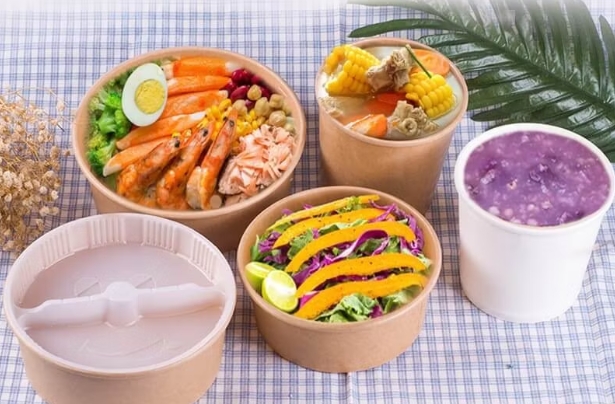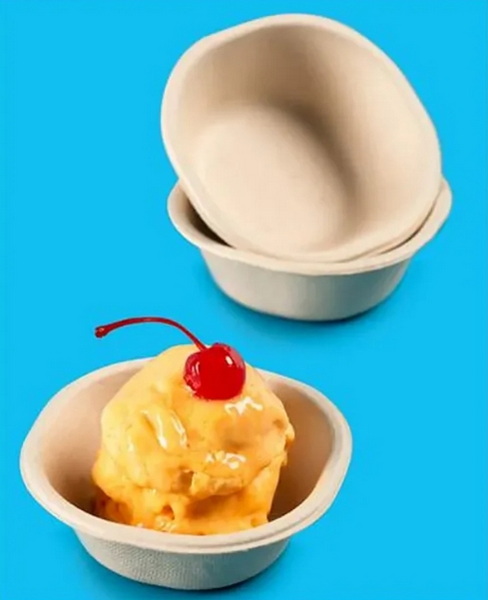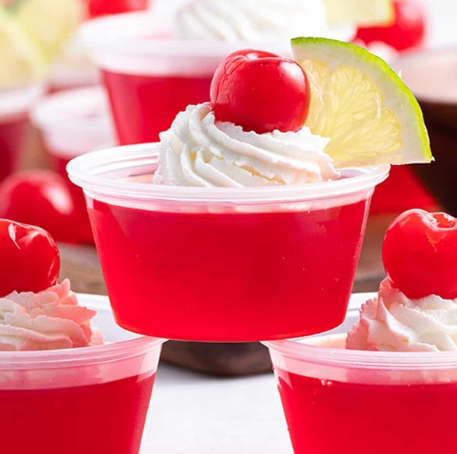
Content Menu
● Understanding Disposable Dip Bowls
>> Common Materials Used in Disposable Dip Bowls
● Are Disposable Dip Bowls Safe for Hot Dips?
>> Heat Resistance and Material Safety
>> Practical Tips for Serving Hot Dips in Disposable Bowls
● Are Disposable Dip Bowls Safe for Cold Dips?
● Environmental Considerations of Disposable Dip Bowls
>> Advantages of Biodegradable Disposable Dip Bowls
>> Limitations
● Choosing the Right Disposable Dip Bowl for Your Needs
● Benefits of Using Disposable Dip Bowls
● Potential Health Concerns and Safety Precautions
● Conclusion
● Frequently Asked Questions (FAQ)
>> 1. Are disposable dip bowls safe to use for hot dips?
>> 2. Can I microwave disposable dip bowls?
>> 3. Are biodegradable disposable dip bowls sturdy enough for thick or sticky dips?
>> 4. How do disposable dip bowls impact the environment?
>> 5. What size disposable dip bowl is best for serving dips?
● Citations:
Disposable dip bowls have become a staple for parties, catering events, and casual gatherings due to their convenience and ease of cleanup. However, many consumers wonder about their safety and suitability for serving both hot and cold dips. This comprehensive article explores the safety, materials, environmental impact, and practical considerations of using disposable dip bowls for a variety of dip temperatures and types.

Understanding Disposable Dip Bowls
Disposable dip bowls are small containers designed specifically to hold dips, sauces, dressings, and condiments. They come in various materials including plastic, paper, plant fibers (such as palm leaf or sugarcane bagasse), and biodegradable composites. Their primary appeal lies in their single-use convenience, reducing the need for washing and minimizing cross-contamination risks at events.
Common Materials Used in Disposable Dip Bowls
- Plastic (Polypropylene, Polystyrene): Durable and heat-resistant, but environmentally problematic due to non-biodegradability and potential chemical leaching under heat[4][5][7].
- Paper: Often coated for moisture resistance, suitable for cold and some warm dips, but can become soggy with prolonged exposure to liquids[2][5].
- Plant Fiber Bowls (Palm Leaf, Bagasse, Bamboo): Compostable, biodegradable, and sturdy enough to handle both hot and cold dips. They offer natural water resistance and heat tolerance[1][5][6][8].
- Biodegradable Bioplastics (PLA, Cornstarch): Eco-friendly but less heat resistant, best for cold or warm dips rather than very hot ones[2][5].
Are Disposable Dip Bowls Safe for Hot Dips?
Heat Resistance and Material Safety
Not all disposable dip bowls are created equal when it comes to serving hot dips. The safety and performance depend largely on the material:
- Plastic Bowls: While some plastic disposable bowls are designed to be heat resistant and microwave safe, many contain plasticizers and other additives that can leach harmful chemicals when exposed to high temperatures or acidic ingredients like vinegar or cooking wine. This can pose health risks such as liver and kidney damage or endocrine disruption[7]. Moreover, not all plastic bowls are microwave safe, and overheating can cause deformation or chemical migration.
- Plant Fiber Bowls: Bowls made from palm leaves or sugarcane bagasse are naturally heat resistant and can safely hold hot dips without breaking down or releasing toxins. For example, palm leaf disposable dip bowls are sturdy and can handle hot, wet, sticky, and spicy foods without leaking or collapsing[1][5][8]. Bagasse bowls can withstand heat up to about 220°F (104°C), making them suitable for most hot dips and sauces[5].
- Paper Bowls: Paper bowls with special coatings can hold warm dips, but very hot or oily dips may cause weakening or sogginess over time. They are generally safe but less durable for hot liquids compared to plant fiber bowls[2][5].
Practical Tips for Serving Hot Dips in Disposable Bowls
- Choose bowls explicitly labeled as heat-resistant or microwave safe.
- Avoid using plastic disposable dip bowls with very hot or acidic dips to minimize chemical leaching risks.
- Consider plant fiber or biodegradable bowls for hot dips to combine safety with environmental benefits.
- Use lids where possible to maintain temperature and prevent spills during transport[8].
Are Disposable Dip Bowls Safe for Cold Dips?
Cold dips such as salsa, guacamole, hummus, and creamy dressings are generally safe to serve in any disposable dip bowl material. Plastic, paper, and plant fiber bowls all perform well with cold dips. However, for environmental reasons, biodegradable plant fiber bowls are preferred since they break down naturally after disposal[1][3][5].
Environmental Considerations of Disposable Dip Bowls
The environmental impact of disposable dip bowls is a growing concern. Traditional plastic bowls contribute to long-lasting waste and pollution. In contrast, biodegradable options made from palm leaf, bagasse, or bamboo offer compostability and biodegradability, reducing landfill burden and pollution[1][3][5][8].
Advantages of Biodegradable Disposable Dip Bowls
- Made from renewable agricultural byproducts or fast-growing plants.
- Compostable and biodegradable within months, safe for home composting.
- Naturally water-resistant and sturdy, suitable for hot and cold dips.
- Enhance brand image for businesses emphasizing sustainability[3][5][8].
Limitations
- Slightly higher cost compared to plastic or paper.
- Availability may be limited depending on region.
- Some biodegradable materials may soften if dips are left for extended periods[5].

Choosing the Right Disposable Dip Bowl for Your Needs
When selecting disposable dip bowls, consider the following factors:
- Material: For hot dips, plant fiber bowls (palm leaf, bagasse) are safest and most eco-friendly. For cold dips, any material works, but biodegradable options are preferred.
- Size: Mini bowls (around 2 oz or 50 ml) are ideal for dips and sauces, allowing portion control and reducing waste[1][4].
- Durability: Ensure the bowl is sturdy enough not to collapse or leak under the weight of the dip.
- Microwave Safety: Only use microwave-safe bowls if reheating dips.
- Environmental Impact: Opt for compostable or biodegradable bowls to reduce ecological footprint.
- Cost and Availability: Balance budget with sustainability goals.
Benefits of Using Disposable Dip Bowls
- Hygienic single-use reduces cross-contamination.
- Convenient cleanup, especially for large events or outdoor settings.
- Portion control helps reduce food waste.
- Stylish biodegradable options add aesthetic appeal to parties.
- Eco-friendly materials support sustainable practices[1][3][4].
Potential Health Concerns and Safety Precautions
- Avoid heating plastic disposable bowls beyond their heat tolerance to prevent chemical leaching.
- Do not use plastic bowls with acidic or alcoholic ingredients that may degrade the plastic.
- Verify product certifications for food safety and microwave compatibility.
- Prefer natural fiber bowls to minimize exposure to synthetic chemicals[7].
Conclusion
Disposable dip bowls can be safe and convenient for serving both hot and cold dips, provided the right materials are chosen. Plastic bowls, while durable, pose potential health risks when exposed to high heat or acidic foods. Biodegradable plant fiber bowls made from palm leaf, bagasse, or bamboo offer a safer and environmentally responsible alternative, capable of handling hot and cold dips without compromising food safety or structural integrity. For eco-conscious consumers and businesses, selecting compostable disposable dip bowls aligns with sustainability goals while maintaining practicality and style. Ultimately, understanding the material properties and usage guidelines ensures a safe, enjoyable, and responsible dip-serving experience.

Frequently Asked Questions (FAQ)
1. Are disposable dip bowls safe to use for hot dips?
Yes, but only if they are made from heat-resistant materials such as palm leaf or bagasse. Plastic bowls may release harmful chemicals if exposed to high heat or acidic dips, so they should be used with caution for hot dips[1][5][7][8].
2. Can I microwave disposable dip bowls?
Only if the bowls are explicitly labeled microwave safe. Many plastic bowls are not microwave safe, and biodegradable bowls like palm leaf or bagasse generally withstand microwave heat but check manufacturer instructions to be sure[1][2][5].
3. Are biodegradable disposable dip bowls sturdy enough for thick or sticky dips?
Yes, biodegradable bowls made from palm leaf or bagasse are naturally sturdy and water-resistant, making them suitable for thick, sticky, or spicy dips without leaking or collapsing[1][3][5].
4. How do disposable dip bowls impact the environment?
Traditional plastic bowls contribute to pollution and landfill waste. Biodegradable bowls made from plant fibers decompose naturally and are compostable, reducing environmental harm and supporting sustainable waste management[1][3][5][8].
5. What size disposable dip bowl is best for serving dips?
Mini disposable dip bowls with a capacity around 2 oz (50 ml) are ideal for dips and sauces. They provide portion control, reduce waste, and are convenient for parties and catering events[1][4].
Citations:
[1] https://foogogreen.com/bowls/mini-3-7-5cm-square-palm-dipping-bowls-50ml/
[2] https://www.innaturepack.com/the-best-disposable-soup-bowls-with-lids-for-hot-soup/
[3] https://foogogreen.com/blog/ways-to-use-biodegradable-dipping-bowls/
[4] https://www.efavormart.com/products/24-pack-plastic-mini-dipping-bowls-2oz-clear-small-disposable-bowls-for-sauces
[5] https://www.bioleaderpack.com/types-of-disposable-bowls-exploring-different-materials/
[6] https://academy.monouso-direct.com/types-of-bowls/
[7] https://www.haokelaopackaging.com/news/are-disposable-plastic-bowls-safe-56136250.html
[8] https://www.biologischverpacken.de/en/assortment/compostable-tableware/sugarcane-tableware/dips/
[9] https://www.hydepackage.com/info-detail/enjoy-disposable-bowls-that-save-time-and-trouble
[10] https://diyecobox.com/best-disposable-bowls-for-hot-soup-top-picks/
[11] https://www.alibaba.com/showroom/disposable-dipping-bowl.html
[12] https://eha.eco/eha-earth-friendly-set-of-4-dip-bowls-for-kitchen-175-ml-made-with-bamboo-fibers-rice-husk-microwave-safe-bowl-set-for-hot-cold-serving-bowls/
[13] https://www.aliexpress.com/item/1005004085650337.html
[14] https://www.christmascentral.com/6-5-ceramic-hot-cold-duo-dipper-2-dish-culinary-dip-serving-container-33474799/
[15] https://foogogreen.com/blog/ways-to-use-biodegradable-dipping-bowls/
[16] https://www.innaturepack.com/creative-uses-for-disposable-small-bowls-dips-desserts-and-more/
[17] https://aecoz.com/dip-cups/
[18] https://smartyhadaparty.com/products/round-palm-leaf-eco-friendly-mini-disposable-dip-bowls
[19] https://www.hydepackage.com/info-detail/the-advantages-of-using-a-kraft-paper-salad-bowl
[20] https://www.biopak.com/au/containers-lids/containers-lids/bowls/paper
[21] https://www.hydepackage.com/info-detail/top-considerations-for-bulk-ordering-compostable-salad-bowls
[22] https://diyecobox.com/best-disposable-bowls-for-hot-soup-top-picks/
[23] https://www.fusenpack.com/blog/innovative-packaging-for-small-disposable-bowls/
[24] https://www.quitplastic.in/post/the-sustainable-choice-2-oz-50-ml-eco-friendly-white-dip-sausage-bowl-with-lid-made-from-sugarcane
[25] https://academy.monouso-direct.com/types-of-bowls/
[26] https://www.alibaba.com/showroom/disposable-dipping-sauce-containers.html
[27] https://www.ecosoulhome.com/blogs/sustainable-living/5-tips-for-choosing-the-best-disposable-bowls-for-hot-soup
[28] https://aradbranding.com/en/disposable-bowl-process-machine-plastic/
[29] https://www.packagingenvironmental.co.uk/disposable-bowls
[30] https://www.magnumpackaging.co.uk/disposable-cups-faqs-i25
[31] https://gmz.ltd/how-to-choose-the-right-paper-bowl-sizes-a-quick-guide/
[32] https://www.sumkoka.com/disposable-cups-facts.html
[33] https://www.efavormart.com/products/24-pack-plastic-mini-dipping-bowls-2oz-clear-small-disposable-bowls-for-sauces
[34] https://greentableware.hk/en-us/home/faq
[35] https://diyecobox.com/health-risks-of-paper-plates-what-to-know/
[36] https://foodpackagingdirect.co.uk/blogs/news/get-all-your-questions-on-disposable-aluminium-foil-food-containers-answered

















